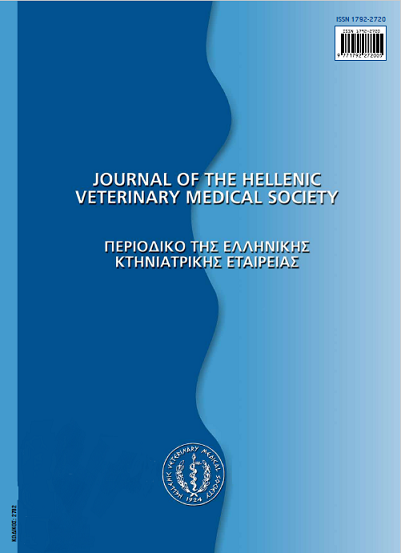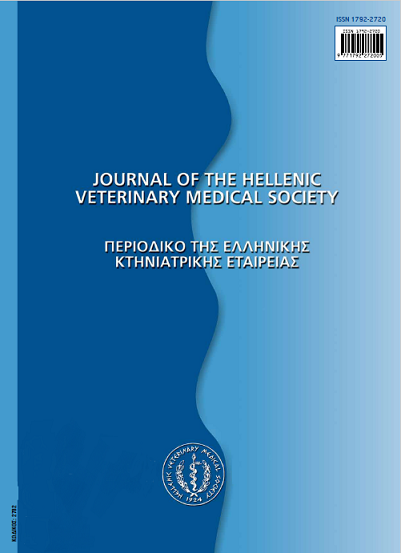Epizootiological. Study of sheep and goat abortion by Salmonella abortus ovis in Greece
Abstract
The epizootiological data concerning sheep and goat abortion cases were studied between 1980-1989. The abortion cases were investigated by cultural or serological exaninations. From the affected flocks, where abortions took place, 1.69% to 19.35% were considered as infected by Salmonella abortus ovis SAO after isolation of the organism. The serological examinations of flocks with abortions, revealed a positivity to SAO of 2.7% to 47%. The infected sheep flocks, that were ascertained by isolation of SAO prevailed against the corrensponding goat herds with an average of 11.25% to 6% respectively.
Article Details
- Come citare
-
GIANNATI-STEFANOU (Α. ΓΙΑΝΝΑΤΗ-ΣΤΕΦΑΝΟΥ) A., BOURTZI-HATZOPOULOU (Ε. ΜΠΟΥΡΤΖΗ-ΧΑΤΖΟΠΟΥΛΟΥ) E., SARRIS (Κ. ΣΑΡΡΗΣ) K., & XENOS (Γ. ΞΕΝΟΣ) G. (2018). Epizootiological. Study of sheep and goat abortion by Salmonella abortus ovis in Greece. Journal of the Hellenic Veterinary Medical Society, 48(2), 93–98. https://doi.org/10.12681/jhvms.15799
- Fascicolo
- V. 48 N. 2 (1997)
- Sezione
- Research Articles

Questo lavoro è fornito con la licenza Creative Commons Attribuzione - Non commerciale 4.0 Internazionale.
Authors who publish with this journal agree to the following terms:
· Authors retain copyright and grant the journal right of first publication with the work simultaneously licensed under a Creative Commons Attribution Non-Commercial License that allows others to share the work with an acknowledgement of the work's authorship and initial publication in this journal.
· Authors are able to enter into separate, additional contractual arrangements for the non-exclusive distribution of the journal's published version of the work (e.g. post it to an institutional repository or publish it in a book), with an acknowledgement of its initial publication in this journal.
· Authors are permitted and encouraged to post their work online (preferably in institutional repositories or on their website) prior to and during the submission process, as it can lead to productive exchanges, as well as earlier and greater citation of published work.









